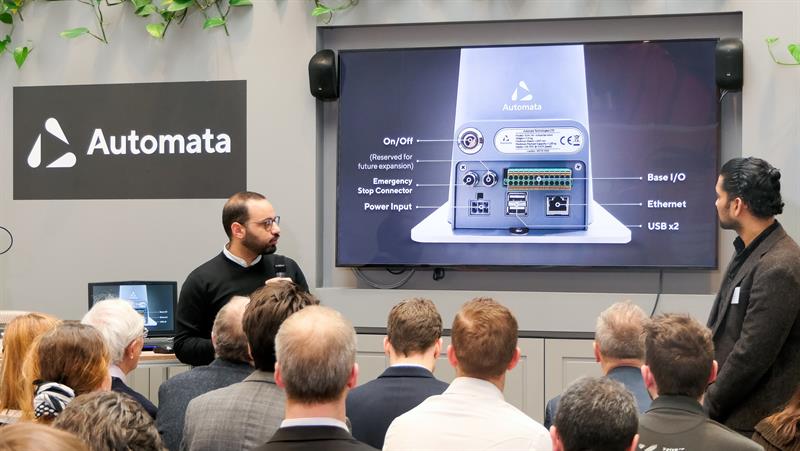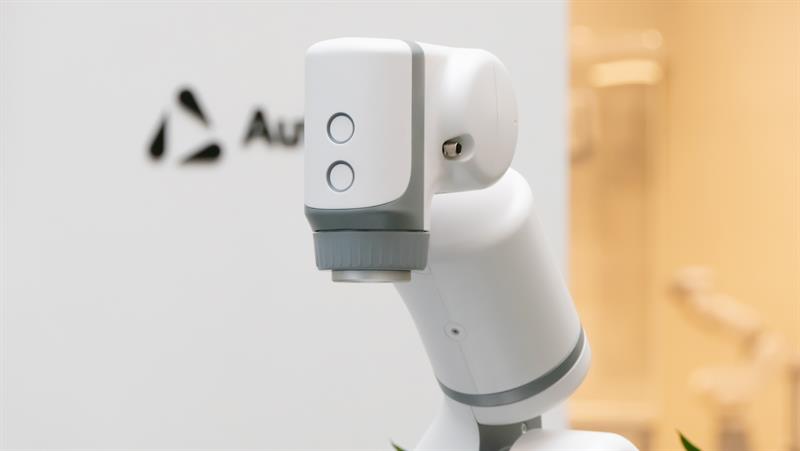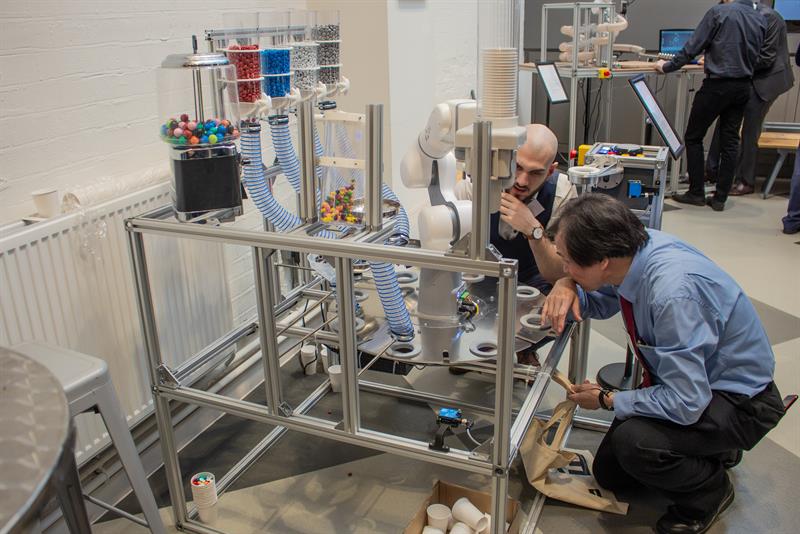Automata sees itself as a new kind of robotics company and, earlier this year, announced $7.4 million in funding, that helped launch Eva – what it claims is the first-ever desktop robot for industrial use. Eva is designed to be lightweight, user-friendly and accessible, while maintaining industrial quality performance and costs just £4,990.
Weighing 9.5kg, with a footprint of 160mm2 and a reach of 600mm, it includes an on-board controller in its base and comes with a free subscription to Automata’s Choreograph software. It has no external control devices as Choreograph can be accessed through any web browser and is programmed via two buttons integrated on the robot arm.
Suryansh Chandra and Mostafa ElSayed, co-founded Automata in 2015 after discovering the limitations of conventional robots when they tried using them on a project at their former employer, Zaza Hadid Architects.
Chandra says: “It turned out we were not alone. There are hundreds of tasks in manufacturing that you would think are done by robot, but they aren’t. They are dull, repetitive, boring, you are literally doing the same thing over and over again eight hours a day.”

So, the pair set out to develop their own robot that was affordable to companies that don’t have the budgets of vehicle manufacturers, for example. The second requirement was that it had to be quick to set up and not need the bulky mountings. Four years – and many iterations – later, Eva is finally ready. The reason for this long gestation period? Taking on the “gatekeepers of robotics” and creating their own gearbox, the ‘Automata Drive’.
ElSayed explains: “We knew that if we had to make a dent in the robotics market we were going to have to tackle a gearbox. There’s only two companies in the world that make them [harmonic gear drives], one based in Germany the other in Japan, they control the price.”
More than that, he continues, once a designer commits to a specific gear drive they are tied into suppliers of other components like motors, brakes and electronics.
“The Automata Drive is central to our robot.” Says ElSayed. “Its patent protected technology is very similar to a harmonic drive and gives about 80% of the performance for around 20% of the cost. But, it’s purpose built, it doesn’t need to perform all kinds of use cases. It’s all about manufacturing tolerances, that’s what helps bring the price down, not the price of the components.”

Programming Eva’s movements is simply done by pressing one of the two buttons which releases the brakes and allows operators to lead it to a ‘waypoint’ where a command is to be carried out. Clicking the second button sets the waypoint, a process called ‘back driving’. This movement is transmitted to the operator’s device, running Choreograph on a browser, and saves those points.
“If I want to locate an object on this table I can simply drag the robot there,” Chandra explains. “This is something that would have taken much longer, much more measurement and much more CAD skills previously.”
Editing the movements on Choreograph is also simple. Waypoints can be edited graphically on the screen of the device and those waypoints can be dragged and dropped into a timeline, similar to video editing software, in the order the robot needs to move.
Chandra says: “This is a UI paradigm that people already understand, we don’t invent a new flow chart or a system that people have to learn, it maps to paradigms that people already understand.”
Eva has already been trialled in a small number of pilot projects. One is at Qualitech Components, a Cambridgeshire-based manufacturer of etched metal components. The robot was installed and started working within an hour of being on site. According to Qualitech’s CEO, Alexander Craig: “Initially, we wanted to trial it in different locations within the factory, but I haven’t been able to get it away from this location because the staff have effectively fallen in love with it.”
He adds that since the arm was installed last November he’s had “no problems” with it and it has allowed Qualitech to upskill staff.

Northumberland-based robotics manufacturer, Tharsus, will build the Eva robot in its newly constructed £5m factory for the manufacture of high-tech products. Its CEO, Brian Palmer, comments: “We’ve been really impressed with the Automata team’s attitude, but also, they’re very open to listening, they’re very open to the journey that we’re on. It’s a really productive relationship.”
Automata and Tharsus expect to sell hundreds of units by the end of 2019.
“Mostafa and I started Automata to democratise robotics and to ultimately allow anyone to seamlessly use a robot. We are extremely proud to offer Eva at the price point we do. People can visit the Automata website and buy a piece of industrial quality equipment on their credit card–it doesn’t get much more accessible than that,” says Chandra.

